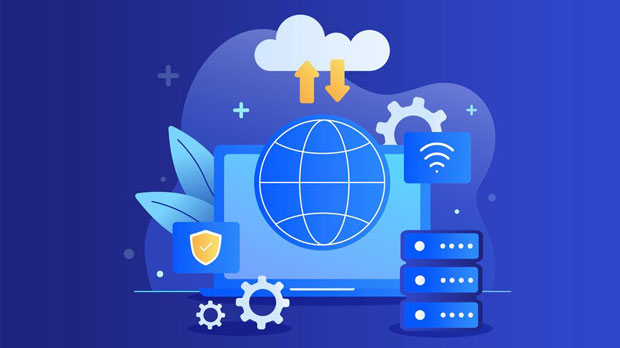In the world of internet anonymity and data scraping, rotating 4G proxies have gained significant attention for their ability to mask the user's original IP address and provide a high level of privacy. These proxies dynamically change their IP addresses, making it more difficult for websites to track users or block requests based on IP. However, a common question among users is whether they can customize the IP switching interval in rotating 4G proxies. The short answer is: yes, in most cases, the IP switching interval can be customized. But the specifics of customization depend on the proxy service provider and the tools they offer. This article will explore the importance of IP rotation, the technical aspects involved, and how users can benefit from customizing the IP switching interval in their rotating 4G proxies. Understanding Rotating 4G ProxiesRotating 4G proxies are a type of proxy service that uses mobile network IPs, typically provided by telecom companies, which are dynamically rotated to maintain anonymity and reduce the risk of detection. Unlike traditional datacenter proxies, which often use a fixed pool of IP addresses, rotating 4G proxies assign a new IP address after a certain interval. This interval can range from seconds to hours, depending on the configuration.These proxies are ideal for applications such as web scraping, automated browsing, and ad verification, where it's essential to avoid detection mechanisms like IP blocking, rate-limiting, and CAPTCHA challenges. The frequent switching of IPs ensures that the user’s activity is not linked to a single address, thus reducing the likelihood of being flagged or banned.The Importance of Customizing the IP Switching IntervalCustomizing the IP switching interval in rotating 4G proxies can provide several benefits, especially for users with specific requirements. Let's break down why this customization is important:1. Avoiding Detection: Websites and online services are increasingly adopting sophisticated methods to detect and block proxy traffic. These systems analyze various factors, including the frequency of IP requests, geographical location, and browsing patterns. By adjusting the IP switching interval, users can mimic more natural traffic behavior, making it harder for websites to identify automated activities.2. Optimizing Speed and Efficiency: In certain use cases, such as data scraping or web crawling, continuously changing the IP address after a short interval can result in slower processing times due to the need for reconnections. On the other hand, longer intervals might lead to detection risks. Customizing the switching interval allows users to strike the right balance between speed and anonymity.3. Geographical Relevance: Some users may need to target specific regions or countries while using rotating 4G proxies. In such cases, the ability to customize the switching interval allows users to control how often they change their IP within a particular region, optimizing their efforts to appear as local users.4. Use Case Specific Needs: Different tasks have different demands. For instance, an automated bot that needs to simulate human-like browsing behavior may require longer IP switching intervals, while a high-frequency data scraper might need rapid IP rotation for optimal performance. Customizing the interval allows the proxy to be adapted to the specific needs of the task.Factors Influencing IP Switching IntervalsThe ability to customize the IP switching interval in rotating 4G proxies depends on various factors. Here are the key aspects that affect how the switching interval is set:1. Proxy Provider Settings: Not all proxy providers allow full customization of the IP rotation frequency. Some providers offer default settings based on typical use cases, while others give users full control over the rotation interval. Before selecting a proxy service, users should check whether the provider supports this level of customization.2. Rate Limits and Quotas: Mobile 4G proxies are often subject to rate limits imposed by telecom providers. These limits can restrict the number of requests made from a single IP in a given period. If the IP switching interval is too short, it might exceed these limits, leading to throttling or bans. Therefore, understanding the service’s rate limits is essential when customizing the interval.3. Proxy Pool Size: The size of the proxy pool (the number of available IPs) is another factor. Larger pools can provide greater flexibility in how often IPs are rotated, while smaller pools may require longer intervals to avoid repetition of IP addresses.4. Location and Network Congestion: The region in which the proxy is being used can also impact the IP switching interval. In some areas, the availability of IP addresses might be limited, leading to longer switching intervals. Additionally, network congestion or slower mobile network speeds might affect the effectiveness of frequent IP changes.How to Customize the IP Switching IntervalCustomizing the IP switching interval typically involves configuring the settings within the proxy provider’s control panel or API. Here's how users can approach it:1. Accessing the Control Panel or API: Most rotating 4G proxy services provide a user interface where clients can manage their account settings. Here, users can often find options to adjust the IP rotation settings, including the switching interval.2. Using the Proxy API: For advanced users or developers, the proxy provider’s API is a powerful tool for customizing various parameters, including IP rotation frequency. Users can integrate this into their scripts or automation tools to dynamically change the interval based on specific conditions, such as request volume or time of day.3. Adjusting Rotation Frequency: Depending on the provider, users might have the option to set the IP rotation interval in minutes or seconds. Some services offer predefined intervals, while others allow for a more granular configuration. Experimenting with different intervals can help users identify the most effective settings for their particular use case.4. Testing and Monitoring: Once the IP switching interval is customized, it’s important to test and monitor the system's performance. Regularly checking for IP blocks, CAPTCHA challenges, and other signs of detection can help users fine-tune the interval for optimal results.Benefits and Drawbacks of Customizing the IP Rotation IntervalLike any technology, customizing the IP switching interval has both advantages and potential drawbacks. Let’s review the key benefits and challenges:Benefits:- Increased Anonymity: By customizing the interval, users can better disguise their online activity, making it less likely that they’ll be identified or blocked by websites.- Improved Performance: For use cases like web scraping or automated browsing, customizing the interval can improve the efficiency of the task by reducing unnecessary reconnections.- Flexibility: Users can adapt the IP rotation to their specific needs, whether they are conducting research, monitoring ads, or running automated bots.Drawbacks:- Complexity: For users without technical knowledge, customizing the rotation interval may seem complicated. Not all proxy services offer user-friendly interfaces for this purpose.- Risk of Detection: If the IP rotation is too rapid or too slow, it might raise suspicion. Finding the optimal interval requires trial and error.- Possible Rate Limiting: Short switching intervals might lead to exceeding rate limits, especially in regions with fewer available mobile IP addresses.In summary, customizing the IP switching interval of rotating 4G proxies is possible in most cases and can provide significant advantages, particularly in terms of anonymity, efficiency, and flexibility. By understanding the technical factors involved and adjusting the settings based on specific needs, users can optimize their use of rotating 4G proxies. However, users should also be mindful of potential drawbacks such as complexity, detection risks, and rate limits. Ultimately, the ability to fine-tune the IP switching interval offers a valuable tool for users who require greater control over their proxy behavior.
Aug 15, 2025





















































